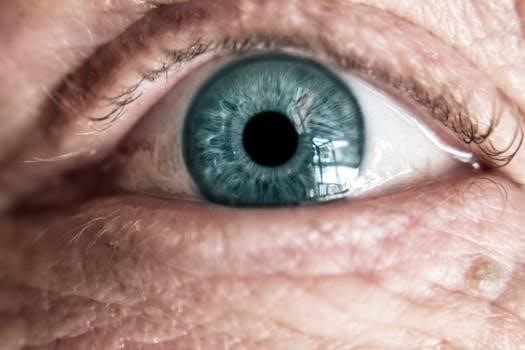
The Old Testament contains fascinating accounts of God’s appearances, often referred to as theophanies. Many theologians propose that these visible manifestations were actually pre-incarnate appearances of Jesus Christ, known as Christophanies, revealing His presence throughout scripture.
Defining Christophanies
Christophany, derived from the Greek words “Christos” (Christ) and “phaneroo” (to reveal), refers to a visible manifestation or appearance of Christ before his incarnation. It signifies a pre-incarnate appearance of Jesus Christ in the Old Testament. These occurrences are distinguished from general theophanies, which are appearances of God, by the specific claim that they are instances of the Son of God, Jesus Christ. Unlike theophanies, which encompass various manifestations of God, Christophanies are seen as specific appearances of the second person of the Trinity. Recognizing these distinctions is vital to understanding the theology of the Old Testament. Many scholars see these appearances as foreshadowing the full revelation of Jesus Christ in the New Testament.

Theological Significance of Christophanies
Christophanies hold deep theological importance, revealing God’s nature and plan through pre-incarnate appearances of Christ. These events highlight Jesus’ active role in the Old Testament narrative and his eternal nature.
Revealing God’s Nature and Plan
Christophanies offer a glimpse into the nature of God, particularly the Son, before his incarnation. These appearances demonstrate that God is not a distant, unknowable entity but actively engages with humanity. They reveal His character, will, and authority, providing a foundation for understanding his later manifestation in Jesus Christ. Through these encounters, God’s redemptive plan is foreshadowed, indicating that even in the Old Testament, Christ was working to fulfill His purposes. The actions and words of the pre-incarnate Christ hint at his role as savior and mediator, laying the groundwork for the New Testament revelation of his full identity and mission. These events underscore God’s consistent character and plan throughout history.
Pre-Incarnate Christ’s Activity
The concept of Christophanies highlights the pre-incarnate Christ’s active role in Old Testament events. These appearances demonstrate that Jesus was not merely a New Testament figure but was actively involved in God’s interactions with humanity from the beginning. His presence as the Angel of the Lord, the man who wrestled with Jacob, and other manifestations, showcases his authority and participation in divine activities. The pre-incarnate Christ’s engagement suggests that his work of salvation and revelation began long before his birth, underscoring his eternal nature and continuous involvement in the world. These encounters reveal his power, compassion, and his unchanging commitment to God’s plan.

Key Old Testament Christophanies
Several Old Testament passages are interpreted as Christophanies, revealing Jesus’ pre-incarnate appearances. These include encounters with the Angel of the Lord, appearances to Abraham, and Jacob’s wrestling match.
The Angel of the Lord
The “Angel of the Lord” is a frequently discussed figure in the Old Testament, often considered a Christophany. This angel speaks with divine authority, sometimes even being identified directly with God. Instances include appearances to Hagar, Abraham, and Moses. This angel’s actions and pronouncements often indicate a pre-incarnate manifestation of Christ. The angel’s pronouncements hold the authority of God Himself, often using first-person pronouns like “I” when speaking. Additionally, the angel often receives worship, a practice reserved for God alone. This is a strong indicator for many theologians that this is not a created angel, but a manifestation of God Himself, specifically the Son.
Appearance to Abraham at Mamre
The encounter at Mamre where three men visited Abraham is a key passage often interpreted as a Christophany. While two of the visitors are identified as angels, the text specifically states that “the Lord appeared to him.” This indicates a direct manifestation of God. The visitor’s interaction with Abraham, including promises and pronouncements, aligns with God’s authority and character. Therefore, many scholars believe that this specific visitor was a pre-incarnate appearance of Christ. This visit reveals God’s personal involvement in human affairs and His active role in fulfilling His promises to Abraham and his lineage. This encounter is vital to understanding Christ’s presence in the Old Testament.
Jacob’s Wrestling Match
Jacob’s wrestling match with a mysterious man is another significant event often considered a Christophany. The man, whom Jacob later recognizes as God, engaged in a physical struggle with him throughout the night. The encounter resulted in Jacob’s name being changed to Israel, signifying his struggle with both God and men. Jacob himself states, “I have seen God face to face,” confirming the divine nature of his opponent. This interaction highlights God’s willingness to engage with individuals personally and demonstrates His transformative power in the lives of those He encounters. The wrestling match is a powerful image of God’s presence.
The Commander of the Lord’s Army to Joshua
The appearance of the Commander of the Lord’s Army to Joshua before the battle of Jericho is viewed as another example of a pre-incarnate Christ. This commander, with a drawn sword, identified himself not as an angel, but as the leader of God’s forces. Joshua’s immediate act of worship further supports the divine nature of this figure. The commander instructs Joshua to remove his sandals, as he stands on holy ground. This is reminiscent of God’s command to Moses. The authority, reverence, and divine presence manifested in this encounter strongly suggests a Christophany. This event highlights Jesus’ role as the leader of God’s people.

Christophany Versus Theophany
Theophanies are general appearances of God, while Christophanies specifically refer to pre-incarnate appearances of Christ. Distinguishing between these is crucial in understanding God’s manifestations in the Old Testament.
Distinguishing Appearances of God
Understanding the difference between theophanies and Christophanies is essential for accurate biblical interpretation. Theophanies are general manifestations of God, which can include various forms, while Christophanies are specifically appearances of the pre-incarnate Christ. Many scholars suggest that all visible theophanies in the Old Testament were, in fact, Christophanies, since the Bible states that no one has seen God the Father. This distinction highlights Jesus’ active role in the Old Testament, even before his incarnation, as the one who reveals the invisible God. Recognizing these differences deepens our understanding of God’s self-revelation throughout scripture.

Debates Surrounding Christophanies
The interpretation of Old Testament appearances of God is not without controversy. Scholars debate whether certain instances are Christophanies or angelophanies, and the nature of less clear appearances remains a point of discussion.
Angelophanies versus Christophanies
A central debate revolves around distinguishing between angelophanies and Christophanies. Some scholars believe that appearances of “the angel of the Lord” are indeed encounters with a pre-incarnate Christ. Others argue these are merely manifestations of created angelic beings. The distinction hinges on interpreting the authority and actions of the figure described in the text. If the figure speaks with divine authority, bears God’s name, or performs actions only God can do, it lends credence to the Christophany interpretation. However, when these characteristics are not explicit, the appearance might be classified as an angelophany. This ongoing scholarly discussion highlights the complexity of interpreting these Old Testament passages.
Interpreting less clear Old Testament Appearances
Not all Old Testament appearances are clearly defined as either theophanies, angelophanies, or Christophanies. Some figures, like the fourth man in the fiery furnace in Daniel, or Melchizedek, raise questions. While some view these as possible pre-incarnate appearances of Christ, the biblical text may not provide sufficient evidence to confirm this definitively. These instances lead to scholarly debate, with some suggesting they may be types of Christ, or perhaps angelic messengers rather than Jesus himself. Recognizing the ambiguity in certain passages is crucial for responsible biblical interpretation. These less clear appearances prompt a deeper exploration of the varied ways God chose to reveal himself.
Recognizing Christophanies
Identifying Christophanies involves examining the biblical text for phrases like “the Lord appeared,” or actions that only God can perform. These clues help distinguish potential pre-incarnate appearances of Christ.
Clues from Biblical Text
Biblical texts often offer subtle yet significant clues that may indicate a Christophany. Look for phrases such as “the angel of the Lord,” which is often equated with God himself, as well as instances where the text explicitly states that “the Lord appeared.” Passages describing God taking on human form or speaking with divine authority can also be indicators. Additionally, consider the context⁚ if the figure performs actions attributed only to God, or if God’s name is directly associated with the figure, it can be a compelling clue. Furthermore, note the use of plural pronouns when God is speaking and remember that Jesus is the word. These are all indicators of a possible pre-incarnate appearance of Christ in the Old Testament.
Authority and Actions
Recognizing Christophanies also involves observing the authority and actions of the figure described in the Old Testament. If a being speaks with the direct authority of God, identifies themselves as God, or performs actions that are exclusively within God’s power, it strongly suggests a pre-incarnate appearance of Christ. These actions could include creating, judging, forgiving sins, or receiving worship. Moreover, if the figure acts as an intermediary between God and humanity, or has a divine name associated with it, it may point to a Christophany. These figures often exhibit a level of authority and power that is beyond that of a created angel or human, further suggesting their divine nature.
Christophanies reveal Jesus’ presence throughout the Old Testament, offering a deeper understanding of His role as Savior. They highlight His activity and presence before his incarnation.
Jesus’ Presence Throughout Scripture
Recognizing Jesus in the Old Testament through Christophanies reveals a continuous thread of His presence and activity throughout scripture. These appearances demonstrate that Jesus, the second person of the Trinity, was not absent before His incarnation, but actively involved in human history. The Old Testament, therefore, is not just a collection of stories but a prelude to Christ’s arrival. It showcases His eternal nature and his active role in God’s redemptive plan. Understanding these appearances allows us to perceive the fullness of God’s revelation and appreciate the cohesive nature of the entire Bible, revealing Jesus’ constant presence from beginning to end, connecting the old and new testaments.